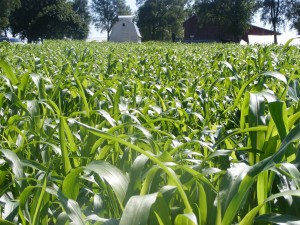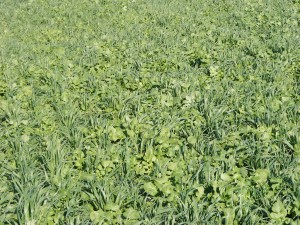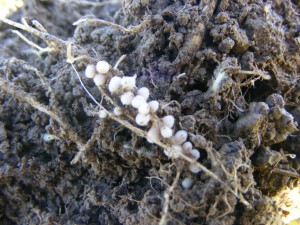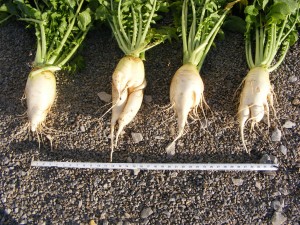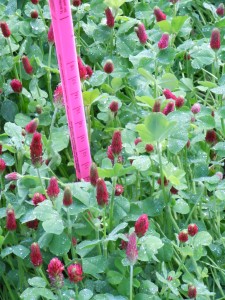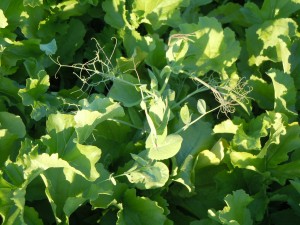
This question keeps coming up on a regular basis in cover crop meetings….”where is my nitrogen?”
There are a number of things we know:
- Legumes produce N and some of that N is available for the next crop.
- Most cover crops scavenge N. Some of that N is available for the next crop.
- Some of the N is not available for the next crop.
How do you determine how much N is available for the next crop?
According to Managing Cover Crops Profitably: (p. 22)
How Nitrogen is Released
How much N will soil really acquire from a legume cover crop? Let’s take it from the point of a freshly killed, annual legume, cut down in its prime at mid-bloom.The management and climatic events following the death of that legume will greatly affect the amount and timing of N release from the legume to the soil. Most soil bacteria will feast on and rapidly decompose green manures such as annual legumes, which contain many simple sugars and proteins as energy sources. Soil bacteria love to party and when there is lots to eat, they do something that no party guest you’ve ever invited can do—they reproduce themselves, rapidly and repeatedly,doubling their population in as little as seven days under field conditions (306). Even a relatively inactive soil can come to life quickly with addition of a delectable green manure. The result can be a very rapid and large release of nitrate into the soil within a week of the green manure’s demise. This N release is more rapid when covers are plowed down than when left on the surface. As much as 140 lb. N/A has been measured 7 to 10 days after plowdown of hairy vetch (363).Green manures that are less proteinrich (N-rich) will take longer to release N. Those that are old and fibrous or woody are generally left for hard-working but somewhat sluggish fungi to convert slowly to humus over the years, gradually releasing small amounts of nutrients. Other factors contribute significantly to how quickly a green manure releases its N.Weather has a huge influence.The soil organisms responsible for decomposition work best at warm temperatures and are less energetic during cool spring months. Soil moisture also has a dramatic effect. Research shows that soil microbial activity peaks when 60 percent of the soil pores are filled with water, and declines significantly when moisture levels are higher or lower (244).This 60 percent water-filled pore space roughly corresponds to field capacity, or the amount of water left in the soil when it is allowed to drain for 24 hours after
a good soaking rain. Microbes are sensitive to soil chemistry as well. Most soil bacteria need a pH of between 6 and 8 to perform at peak; fungi (the slow decomposers) are still active at very low pH.Soil microorganisms also need most of the same nutrients that plants require, so low-fertility soils support smaller populations of primary decomposers, compared with high-fertility soils.Don’t expect N-release rates or fertilizer replacement values for a given cover crop to be identical in fields of different fertility. Many of these environmental factors are out of your direct control in the near term.Management factors such as fertilization, liming and tillage, however, also influence production and availability of legume N.
So while know that cover crop legumes produce nitrogen we also know that the nitrogen will be released at different times and in different amounts according to the circumstances in individual fields and with different management practices.
In 2010 many producers across the Midwest shared that they could see a “big difference” in their corn yield where they had a legumes as a cover crop. While we cannot easily (or maybe not totally) quantify the pounds of N available for the next crop we can count on some level of improved performance. Can we reduce our inputs? Maybe. Can we always get higher yields? No. Can we anticipate an improved yield? Probably. Some folks will tell you “yes” to those questions! Some others will have a different experience.
So what do you do? Plan for success, scout your corn, use a pop-up and/or starter with nitrogen…and scout…oh, yeah, I guess I already said that!
